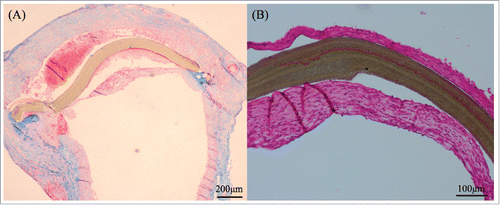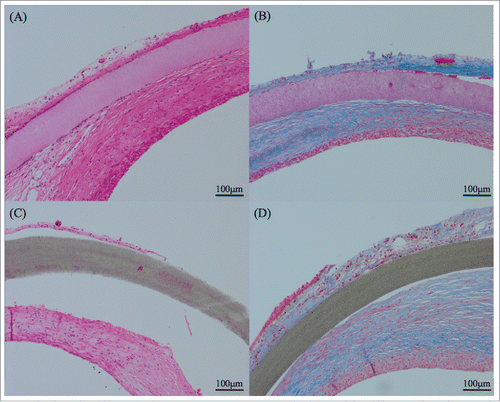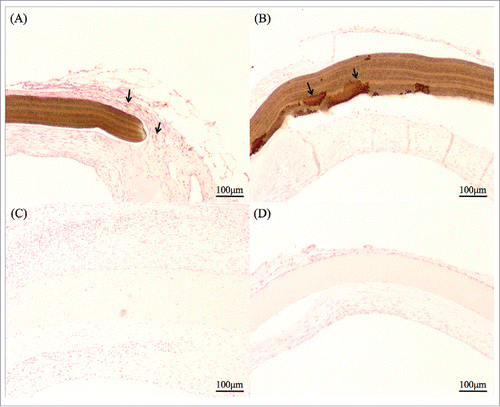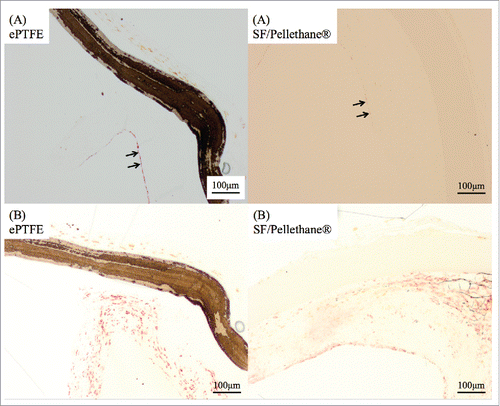Figures & data
FIGURE 1. (A) ePTFE showed blood leakage from the suture site. (B) SF/Pellethane® swelled due to water absorption and blood did not leak.

FIGURE 2. (A) This figure was stained by MTC method. A 1-week sample from the control group revealed a clot between the ePTFE patch and its surrounding tissue. (B) After 3 weeks, inflammation cells and native tissue became non-reactive to ePTFE patches.

FIGURE 3. This figure was shown samples of 3 months. SF/Pellethane® patch was stained by HE method (A) and shown collagen fibers in blue color by MTC staining (B). ePTFE patch was showed separation from the tissue (C) and was not infiltrated by collagen fibers (D).

TABLE 1. Scoring of inflammation was done as follows; – (0), no; + (1), minute; ++ (2), modulate; +++ (3), severe and ± standard deviation (SD). Scoring of infiltration was done as follows; – (0), no; + (1), around patch; ++ (2), partial; +++ (3), overall and ± SD
TABLE 2. MTC staining results. Scoring of infiltration of collagen fibers was done as follows; – (0), no; + (1), a few or around patch; ++ (2), partial; +++ (3), overall and ± SD
TABLE 3. Scoring of calcification was done as follows; – (0), no; + (1), calcification deposits around patch; ++ (2), in patch; +++ (3), severe and ± SD
FIGURE 4. Kossa staining indicated calcification in brownish color. (A) ePTFE patch at 4 weeks had some calcified granules. (B) At 3 months, the calcification of the all ePTFE patch itself was observed. (C) SF/Pellethane® patches at a few samples had calcified granules. (D) At 3 months almost samples had only granules and did not react patch itself.


